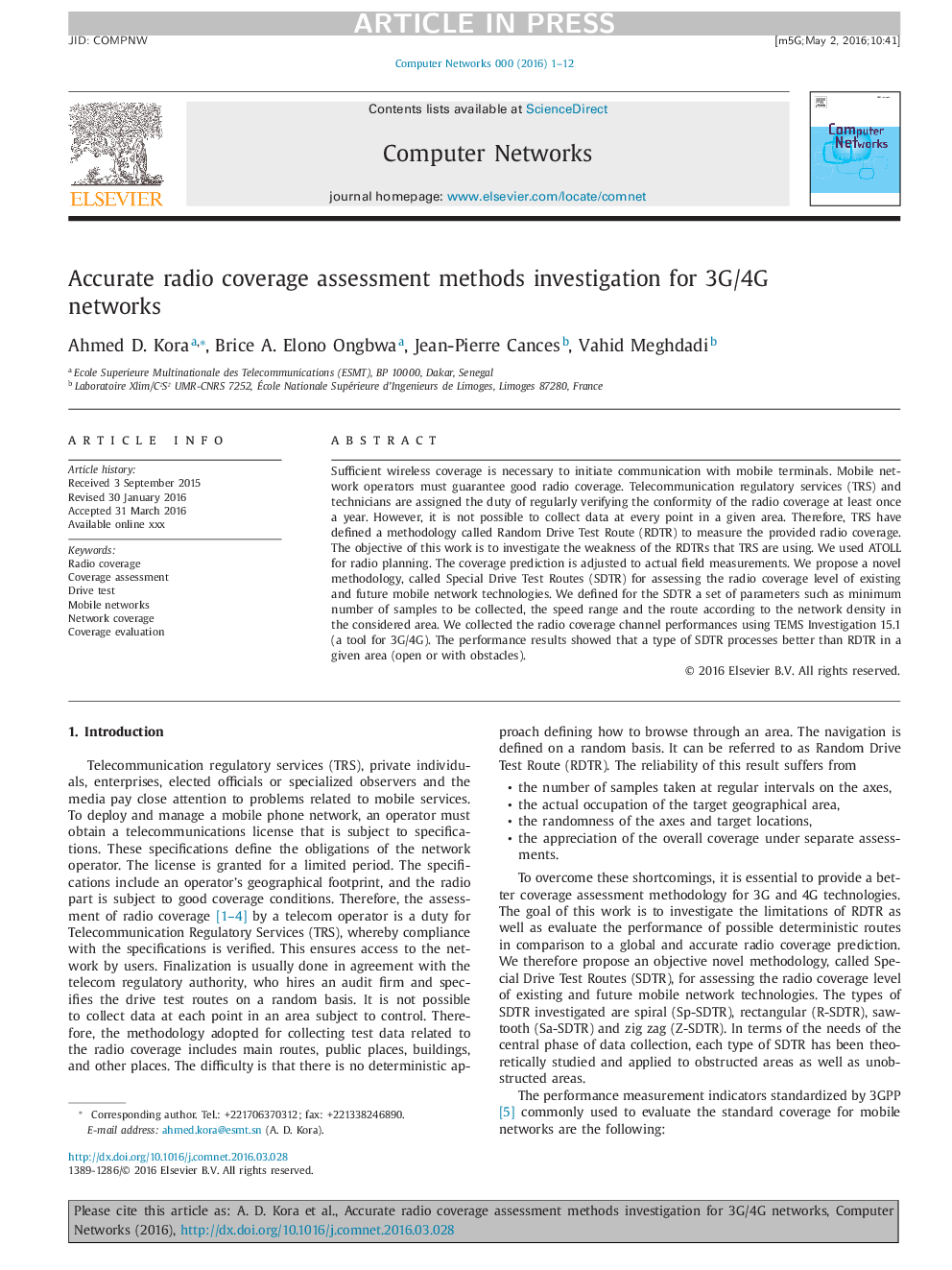| Article ID | Journal | Published Year | Pages | File Type |
|---|---|---|---|---|
| 4954960 | Computer Networks | 2016 | 12 Pages |
Abstract
Sufficient wireless coverage is necessary to initiate communication with mobile terminals. Mobile network operators must guarantee good radio coverage. Telecommunication regulatory services (TRS) and technicians are assigned the duty of regularly verifying the conformity of the radio coverage at least once a year. However, it is not possible to collect data at every point in a given area. Therefore, TRS have defined a methodology called Random Drive Test Route (RDTR) to measure the provided radio coverage. The objective of this work is to investigate the weakness of the RDTRs that TRS are using. We used ATOLL for radio planning. The coverage prediction is adjusted to actual field measurements. We propose a novel methodology, called Special Drive Test Routes (SDTR) for assessing the radio coverage level of existing and future mobile network technologies. We defined for the SDTR a set of parameters such as minimum number of samples to be collected, the speed range and the route according to the network density in the considered area. We collected the radio coverage channel performances using TEMS Investigation 15.1 (a tool for 3G/4G). The performance results showed that a type of SDTR processes better than RDTR in a given area (open or with obstacles).
Keywords
Related Topics
Physical Sciences and Engineering
Computer Science
Computer Networks and Communications
Authors
Ahmed D. Kora, Brice A. Elono Ongbwa, Jean-Pierre Cances, Vahid Meghdadi,
